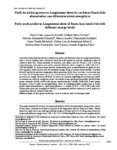Por favor, use este identificador para citar o enlazar este ítem:
http://www.alice.cnptia.embrapa.br/alice/handle/doc/939726Registro completo de metadatos
| Campo DC | Valor | Lengua/Idioma |
|---|---|---|
| dc.contributor.author | ARRUDA, P. C. L. de | pt_BR |
| dc.contributor.author | PEREIRA, E. S. | pt_BR |
| dc.contributor.author | PIMENTEL, P. G. | pt_BR |
| dc.contributor.author | BOMFIM, M. A. D. | pt_BR |
| dc.contributor.author | MIZUBUTI, I. Y. | pt_BR |
| dc.contributor.author | RIBEIRO, E. L. de A. | pt_BR |
| dc.contributor.author | FONTENELE, R. M. | pt_BR |
| dc.contributor.author | REGADAS FILHO, J. G. L. | pt_BR |
| dc.date.accessioned | 2012-11-14T11:11:11Z | pt_BR |
| dc.date.available | 2012-11-14T11:11:11Z | pt_BR |
| dc.date.created | 2012-11-14 | pt_BR |
| dc.date.issued | 2012 | pt_BR |
| dc.identifier.citation | Semina: Ciências Agrárias, Londrina, v. 33, n. 3, p. 1229-1240, maio/jun. 2012. | pt_BR |
| dc.identifier.uri | http://www.alice.cnptia.embrapa.br/alice/handle/doc/939726 | pt_BR |
| dc.description | Resumo: O presente estudo objetivou avaliar a influência de rações com diferentes níveis de energia metabolizável sobre o teor de lipídeos totais, colesterol e perfil de ácidos graxos no músculo Longissimus dorsi de cordeiros Santa Inês. Foram utilizados 20 cordeiros, com idade e peso de 50 dias e 13,0 ± 0,56 kg, respectivamente, alimentados com rações contendo diferentes níveis energéticos: 2,08; 2,28; 2,47 e 2,69 Mcal/kgMS. Os animais foram pesados semanalmente para acompanhamento do ganho de peso vivo, quando a média do peso vivo do tratamento atingiu 28 kg, os animais foram abatidos. A análise do perfil lipídico do músculo Longissimus dorsi apresentou efeito linear crescente e decrescente para os ácidos Cis-10 heptadecanóico (C17:1) e eicosatrienóico (C20:3), respectivamente, com o aumento nos níveis de energia dietéticos (P<0,05). Os níveis de colesterol (mg/100g) decresceram em relação ao aumento nos níveis de energia das rações. As relações ácidos graxos poliinsaturados (AGPI):ácidos graxos saturados (AGS); AGPI:ácidos graxos monoinsaturados (AGM); AGM:AGS; ácidos graxos desejáveis, w-6:w-3, índice de aterogenicidade, índice de trombogenicidade, relação entre os ácidos graxos hipercolesterolêmicos e hipocolesterolêmicos e a relação (C18:0 + C18:1):C16:0 não foram influenciadas pelos níveis energéticos (P>0,05). A manipulação dietética influencia o perfil lipídico no Longissimus dorsi de cordeiros Santa Inês. [Fatty acids profile in Longissimus dorsi of Santa Ines lambs fed with different energy levels]. Abstract: This study evaluated the influence of rations with different levels of metabolizable energy on the content of total lipids, cholesterol and fatty acid profile of the longissimus dorsi of Santa Ines lambs. Twenty Santa Ines lambs were used, with age and body weight of 50 days and 13.0 ± 0.56 kg, respectively, fed rations with different energy levels: 2.08; 2.28; 2.47 e 2.69 Mcal/kgDM. Animals were weighed weekly to follow their body weight gain (BWG); when the mean BW of the treatment reached 28 kg, the animals were slaughtered. The analysis of the lipid profile of Longissimus dorsi presented linear increasing and decreasing for the Cis-10 heptadecanoic acid (C17:1) and eicosatrienoic (C20:3), respectively, with the increasing dietary energy levels (P < 0.05). Cholesterol levels (mg/100g) decreased in relation to the increase in energy levels in the diet. The relations polyunsaturated fatty acids (PUFA): saturated fatty acids (SFA); PUFA: monounsaturated fatty acids (MUA), MUA: SFA, desirable fatty acids, w-6:w-3, atherogenicity index, thrombogenicity index, relation between hypocholesterolemic and hypercholesterolemic fatty acids and the relation (C18:0+C18:1):C16:0 were not affected by energy levels (P>0.05). The dietary manipulation influences the lipid profile in Longissimus dorsi of Santa Ines lambs. | pt_BR |
| dc.language.iso | por | pt_BR |
| dc.rights | openAccess | pt_BR |
| dc.subject | Índice de aterogenicidade | pt_BR |
| dc.subject | Longissimus dorsi | pt_BR |
| dc.title | Perfil de ácidos graxos no Longissimus dorsi de cordeiros Santa Inês alimentados com diferentes níveis energéticos. | pt_BR |
| dc.type | Artigo de periódico | pt_BR |
| dc.date.updated | 2015-04-27T11:11:11Z | pt_BR |
| dc.subject.thesagro | Ovino | pt_BR |
| dc.subject.thesagro | Cordeiro | pt_BR |
| dc.subject.thesagro | Carne | pt_BR |
| dc.subject.thesagro | Ácido graxo | pt_BR |
| dc.subject.thesagro | Dieta | pt_BR |
| dc.subject.thesagro | Nutriente | pt_BR |
| dc.subject.thesagro | Alimento concentrado | pt_BR |
| dc.subject.nalthesaurus | Sheep | pt_BR |
| dc.subject.nalthesaurus | Mutton | pt_BR |
| dc.subject.nalthesaurus | Lamb meat | pt_BR |
| dc.subject.nalthesaurus | Unsaturated fatty acids | pt_BR |
| dc.subject.nalthesaurus | Concentrates | pt_BR |
| riaa.ainfo.id | 939726 | pt_BR |
| riaa.ainfo.lastupdate | 2015-04-27 | pt_BR |
| dc.contributor.institution | Paulo César Lopes de Arruda, Pós-graduação -Universidade Federal do Ceará (UFC) - Fortaleza, CE.; Elzânia Sales Pereira, UFC - Fortaleza, CE.; Patrícia Guimarães Pimentel, UFC, Fortaleza, CE; MARCO AURELIO DELMONDES BOMFIM, CNPC; Ivone Yurika Mizubuti, Universidade Estadual de Londrina (UEL) - Londrina, PR; Edson Luis de Azambuja Ribeiro, UEL - Londrina, PR; Rildson Melo Fontenele, Pós-graduação - UFC - Fortaleza, CE.; José Gilson Louzada Regadas Filho, Universidade Federal de Viçosa (UFV) - Viçosa, MG. | pt_BR |
| Aparece en las colecciones: | Artigo em periódico indexado (CNPC)  | |
Ficheros en este ítem:
| Fichero | Descripción | Tamaño | Formato | |
|---|---|---|---|---|
| CNPC2012Perfil.pdf | 329,9 kB | Adobe PDF |  Visualizar/Abrir |









